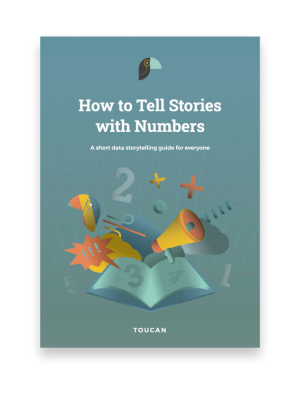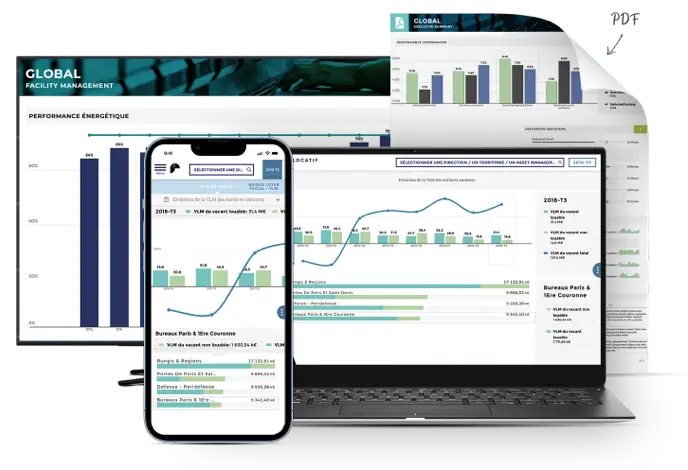You want your company to be able to access and analyze data and make real-time business decisions using that data. And you also want to adapt to the ever-changing tech of the business landscape. So... what's the solution?
Enter the game-changer: Headless Business Intelligence (BI).
Today, we're diving into the core elements of Headless BI, exploring its profound impact on data stacks and how it revolutionizes access to actionable insights. Prepare for a new data analytics journey!
Understanding Headless Business Intelligence
Headless Business Intelligence (BI) might sound complex, but it's quite a simple concept once you break it down.
Think of it as BI without the traditional front-end interface. Instead of having a single, built-in way to see data reports, Headless BI separates the data processing part from the visual presentation.
This separation allows businesses to use the data in various ways. They can tailor how they view and interact with it to meet their specific needs.
So, what exactly is Headless BI? At its core, it refers to the backend systems that handle data analysis and management.
These systems work behind the scenes to gather, sort, and analyze data. Because the "head" - the part that usually shows the data in charts or reports - is missing, users have the freedom to create custom displays. They can use any tool or platform they like to visualize the data in a way that makes the most sense for them.
This approach has its roots in the tech world's ongoing quest for flexibility and efficiency. As businesses grow and change, they need systems that can keep up.
Headless BI offers just that, by making it easier to integrate data analytics into a wide range of applications and services. It's especially useful for companies that already have a set way of doing things but need a more powerful data analysis tool to fit into their existing setup.
The Impact of Headless BI on Data Stacks
Headless Business Intelligence is changing the game for how companies handle their data.
One of the biggest benefits of Headless BI is how well it plays with others. It can easily join forces with your existing data systems, like data lakes or warehouses. This means you can keep using the systems you're comfortable with while also getting deeper insights from your data.
Headless BI is all about freedom. It separates the nitty-gritty data analysis work from the way data is shown or used.
This split means businesses can tailor their data presentation to fit their unique needs. And they can do it without being tied down by the limitations of traditional BI tools.
This approach helps businesses grow and adapt without being held back by their data analytics tools. With Headless BI, updating your data analytics is no longer a massive overhaul project. It's more about small adjustments that can be made quickly and without disrupting your operations.
Plus, keeping data processing separate from the presentation layer means your systems can more easily handle more data and more complex analyses.
Benefits of Headless Business Intelligence
Headless BI brings a lot of benefits to the table, and it's all about making data work better for businesses.
First off, it opens up new doors for data access and sharing. Imagine all the valuable insights from your company's data being easily available to different teams, no matter what tools they prefer using.
This is what Headless BI does best. It breaks down the barriers that often keep data siloed. That way everyone can get the information they need when they need it.
Another big plus is how customizable and flexible Headless BI is. It doesn't tie you to a specific way of viewing data. So you can set up your reports and dashboards exactly how you like them.
This means businesses can tailor their data presentation to fit their unique needs and preferences.
Cost and time efficiency are also major advantages. Traditional BI solutions can be pricey and time-consuming to set up and maintain.
Headless BI, on the other hand, focuses on the data itself, without the extra fluff. This streamlined approach saves money and speeds up the process of getting valuable insights. Businesses can react faster to new information, making better decisions without delay.
Tools and Services
There are a variety of Headless BI tools out there. When it comes to choosing these tools, there are a few things to keep in mind.
The most important factor is how well the tool fits with your existing data stack. You want something that can easily connect to your data sources without causing disruptions.
Security is another big concern. With data breaches making headlines, ensuring your Headless BI tool has robust security measures is really important.
And consider scalability. As your business grows, your data needs will too.
You need a tool that can grow with you. It should be able to handle more data and more complex analyses without skipping a beat.
The decision to build your own Headless BI solution or to buy a ready-made one can be tough. Building your own means you can customize it to fit your exact needs. But it also requires a significant investment of time and resources.
Buying can get you up and running quickly, but you might have to make some compromises on customization.
Implementing Headless BI Solutions
The first step is planning. This is where you figure out what you want from Headless BI. You need to understand your data, how it's collected, and what insights you're hoping to gain.
Next up is data modeling. It's essentially organizing your data in a way that makes sense for your business. It involves deciding how to categorize data and setting up relationships between different pieces of information.
This step is important because it determines how well your Headless BI system will work.
After your data is all setup, it's time to choose the right Headless BI tool. This decision should be based on the factors we talked about earlier. These include how well it fits with your current systems, its security features, and its ability to grow with your business.
Once you've picked the perfect tool, you can start integrating it with your data sources. This step requires some technical know-how, but many Headless BI providers offer support to help.
Training your team is another important step. They need to know how to use the new system to get the insights they need. This might involve some workshops or one-on-one sessions, depending on the size of your team and their familiarity with headless analytics.
Lastly, there's the rollout. This is when you start using your Headless BI system for real.
It's a good idea to start small, with a few key reports or analyses. Then you can expand as everyone gets more comfortable with the system.
Throughout this process, remember to keep an eye out for any challenges. You might run into technical issues or resistance from team members not used to working with data analytics. Being prepared to address these challenges head-on will help ensure your Headless BI implementation is a success.
The Future of Headless BI
Looking ahead, the future of Headless Business Intelligence seems bright and full of possibilities.
One key trend is the growing demand for real-time data analytics. As companies seek instant insights to make quick decisions, Headless BI is adapting to deliver data faster and more efficiently.
Another exciting trend is the integration of Headless BI with different applications and platforms. This means businesses can use their data in more places. This can range from marketing tools to customer service platforms, making data insights more accessible across the organization.
Artificial Intelligence and machine learning are also playing a big role in the evolution of Headless BI. These technologies are making data analytics smarter. They help in understanding complex patterns and predicting future trends based on past data.
This integration means businesses get faster and smarter insights, helping them stay ahead in a competitive market.
As far as the future of the data stack, experts believe that Headless BI will become even more central to data management strategies. As businesses collect more data, the need for efficient, flexible analytics tools will only grow.
Headless BI is expected to lead the way in meeting this demand. With Headless BI at the core of their strategy, it's likely that more companies will adopt a data-first approach. This shift could make data analytics more streamlined and impactful, helping businesses of all sizes unlock the full potential of their data.
The Many Benefits of Headless Business Intelligence
Exploring Headless Business Intelligence reveals a world where data becomes more accessible, customizable, and efficiently integrated into business operations. As we've seen, Headless BI stands as a beacon for companies aiming to harness their data's full potential, promising a future of insightful decisions and innovative strategies.
Toucan's customer-facing analytics platform is designed for the best end-user experience. We offer a customizable, beautiful end-user experience, seamless implementation, and innovation, and unparalleled expertise and support. Get in touch today to find out how we can transform your workflow.





